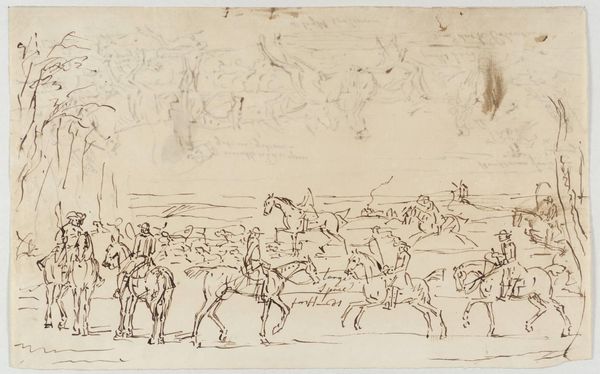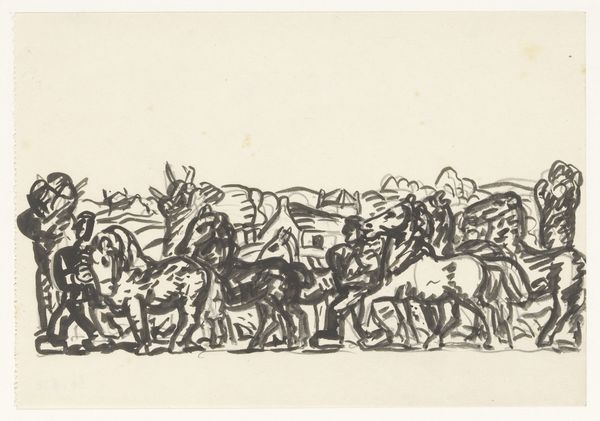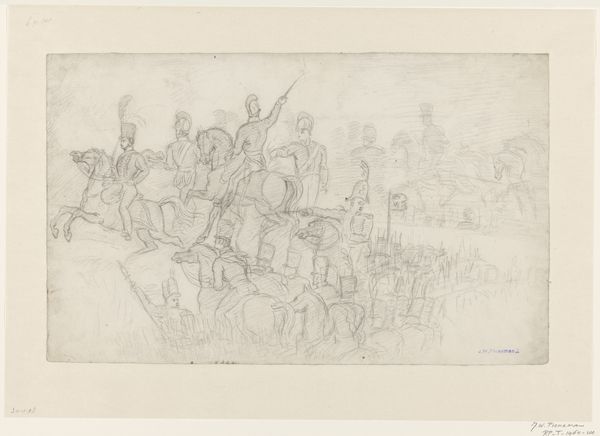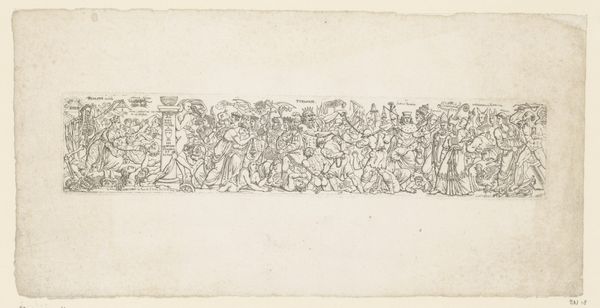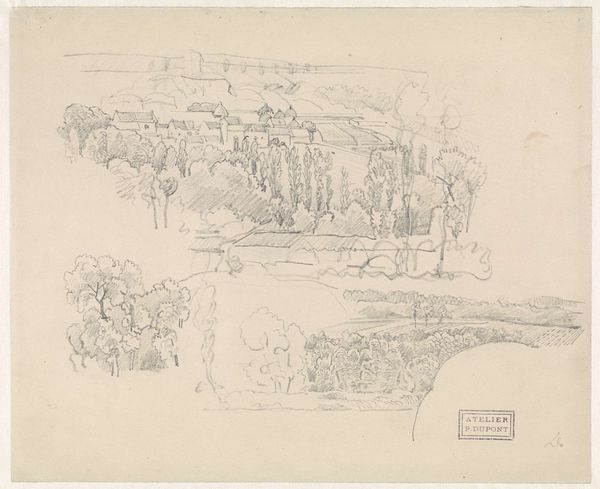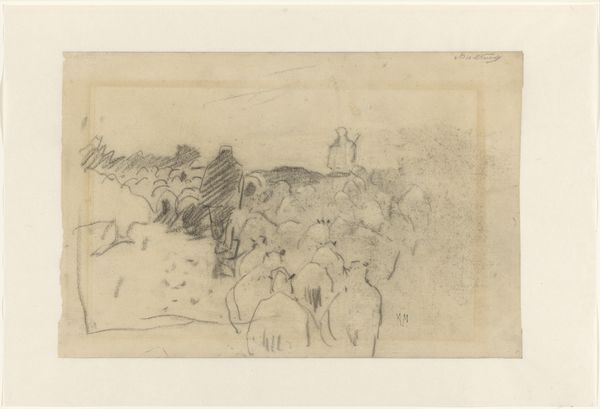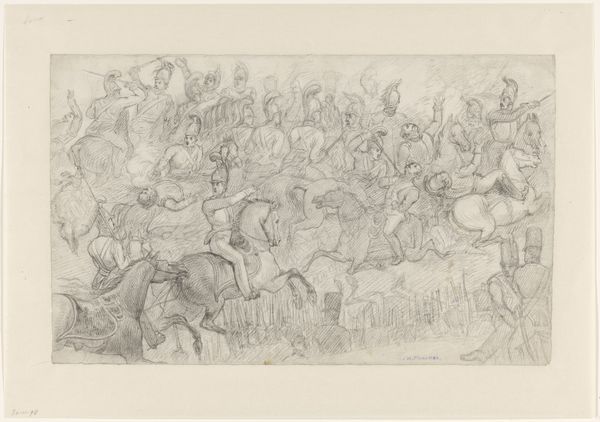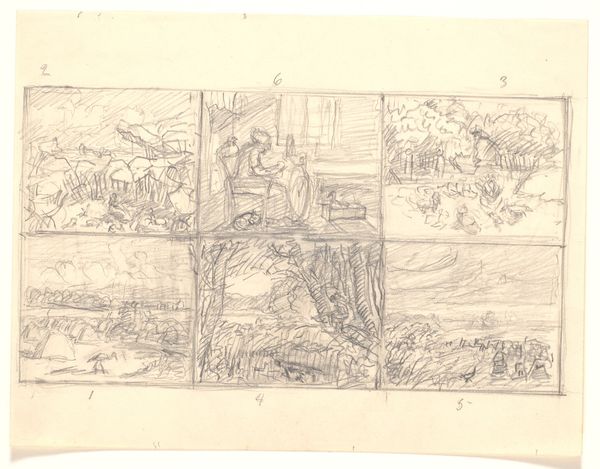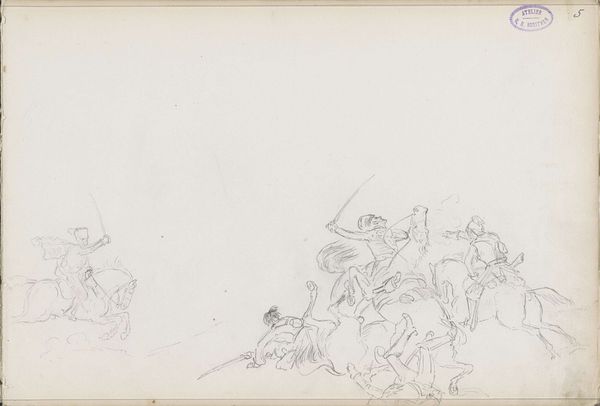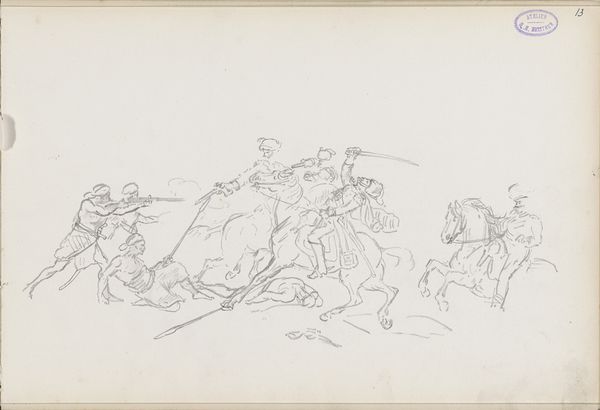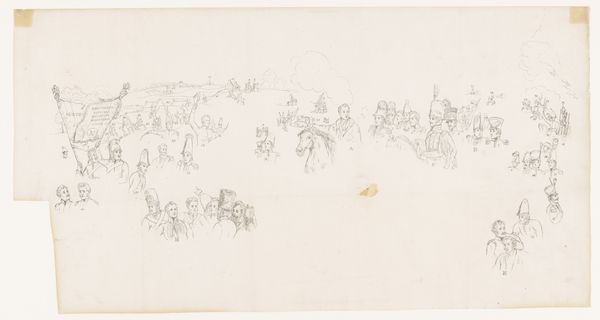
drawing, ink
#
drawing
#
narrative-art
#
animal
#
figuration
#
ink
Dimensions: height 210 mm, width 260 mm
Copyright: Rijks Museum: Open Domain
Curator: This ink drawing is titled "Dieren die inschepen in de ark van Noach"—Animals Boarding Noah's Ark—created by Leo Gestel between 1891 and 1941. It currently resides here at the Rijksmuseum. Editor: Well, my initial impression is one of playful energy. The simple black lines convey movement and a bustling scene, despite the lack of color or shading. There’s a rhythm to the composition, almost like a frieze. Curator: The narrative of Noah's Ark, of course, carries immense cultural weight. It's a story of divine judgment, redemption, and the promise of a new beginning after a cataclysm. Gestel’s rendering, though seemingly simple, taps into the primal emotions linked with this story – fear, hope, and renewal. Editor: I find it striking how Gestel uses a single line to define each animal. There’s no attempt at realistic representation; instead, he’s capturing the essence of each creature through minimal form, emphasizing contours. Observe the variety he achieves with just a few strokes – the bulk of the elephant, the slinkiness of the lion. Curator: And how he's chosen to depict such a hopeful story. Noah, a figure of righteousness in a corrupt world, tasked with preserving life. It's a powerful symbol, seen across religions and cultures, of human resilience and the potential for rebirth even after near-total destruction. Editor: I'm intrigued by the absence of a defined horizon line. The ark and the animals appear suspended in a continuous plane, which flattens the image, calling our attention to its graphic qualities rather than spatial depth. I wonder if he was thinking of Medieval tapestries at all? Curator: Interesting parallel. It's undeniable that Noah’s story also resonates on a personal level. Facing adversity, seeking salvation… these are universal human experiences. Gestel perhaps uses familiar imagery to portray deep feeling, speaking to his viewer about life changes. Editor: I’d agree. Ultimately, Gestel transforms a story of potentially overwhelming sadness into something lively, making us perhaps more connected to our sense of humor as we ponder even the toughest things. Curator: A lovely point! Perhaps this fresh interpretation provides space for hope. Thank you for these fresh observations! Editor: Thanks for this cultural insight!
Comments
No comments
Be the first to comment and join the conversation on the ultimate creative platform.
